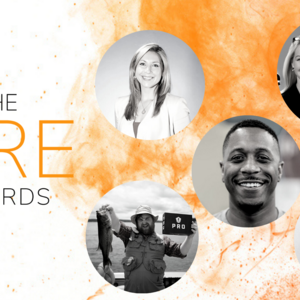[from GA Blog]
As technology continues to advance at an exponential rate, the need for today’s enterprise to stay ahead of the digital curve is more vital than ever. Already, 2015 has begun to show us several new trends that are likely to emerge and ground themselves in our day to day lives. Here is a quick snapshot of 15 digital trends that are likely to become ubiquitous over the course of theyear:
1. Digital businesses reap increasing levels of government scrutiny
For decades, digital businesses have been able to operate and experiment outside of the traditional scrutiny of many other industries. The combination of a lack of technological understanding and few consumer complaints kept politicians out of the way of innovation for businesses that rely on the Internet to operate.
Unfortunately, for Internet businesses, that’s no longer the case. From the banning of Uber in a variety of governments to Better Business complaints for mobile phone companies likeBetter Finance, government is beginning to take a more active role in monitoring the industry.Combine that with the rise of political action committees funded by Internet businesses like Facebook and Google, and we expect to see more traditional legislation affecting non-traditional Internet-based businesses.
2. E-commerce increases experimentation with new forms of payment and transaction
Source:Flickr
2015 will be the year transaction and marketing begin to merge. The increasing experimentation we’re seeing from companies shows that the barriers to transaction are coming dow, and consumers are more and more willing to pay for products in ways we’ve never seen before.
This transition begins with Twitter integrating purchasing into the twitter stream with applications like Gumroad, and includes functionality likeEbay partnering with Rebecca Minkoffand other fashion brands to integrate e-commerce in to brick and mortar retail.
It also means that new currencies likeBitcoin will become more disseminated across multi-channel commerce,while features such as ApplePay create the perfect environment for impulse buying. Meaning online Skittles ads in 2015 could result in a direct purchase and delivery to your door in under and hour. The role of marketing fornearly all products is shifting from a focus onawarenesstotransaction.
3. Rise of specific-use social products over “traditional” social networking sites
The large social media sites that we’ve come to rely on existed, initially, as a storage medium for our thoughts and photos. In 2015 the “place” our thoughts, photos, and videos are stored will become less important. We’ll begin to use different, smaller, applications for specific purposes.
Yik Yak, Secret, Reddit, etc. for anonymity. Instagram, Vine, and Snapchat for quick image sharing. Line and Wechat for connecting with friends. We are becoming less and less interested in the pressures of public presentation and more interested in using technology to facilitate social interactions. Interestingly these interactions will feel more and more personal and less like “putting it up on the web” than ever before.
4. Cybersecurity matures
Source:Flickr
Part of our concern around public presentation is security. In 2015 we’ll see the consumerization of cybersecurity. As more large organizations face hacking scandals from private groups and (presumably) foreign nations, individuals will respond by purchasing more “secure” online technologies.
On the good side, most large-scale hacks begin at the level of individual employees. Increasing the security savviness of everyone should help to reduce the number of large-scale hacks. On the bad side, I’m certain it will result in many people spending money on useless technologies that results in lower overall security.
5. Photographic indexing and analysis becomes a consumer expectation
In 2014, both Apple and Google began selecting the “best” photo from those uploaded from mobile devices. Instagram (read: Facebook) began offering an auto improve button for any photo taken. And Adobe began offering a suite of apps that can select colors from a photo and even create vector outlines for use in Illustrator. In 2015 expect to see these features improve and add newproducts from a variety of companies. New features could be text recognition, improved vector analysis, even mood and sentiment applied to nearly everything.
For businesses the implications of these technologies are complex. From being able to understand users better by reading color, angle and location of their images. To guiding design decisions based on information gleaned from customers’ existing aesthetics.
6. Rise of location-based advertising (PlaceIQ, etc.)
Our global transition from desktop to mobile has meant new pressures and new opportunities foradvertisers. The traditional methods of reaching customers (banner ads) are even less effective on mobile phones than on desktop. The challenge is not that banner ads are annoying, but that they are rarely served at the time and place we need them.
An ad to download a new game while we’re out holiday shopping isn’t congruent with our needs. In 2015 we’ll see a rise in companies that promise to deliver location-contextual ads to consumers such asPlaceIQ and their work for Victory Motorcycles.
Our phones’ location can be anonymously tracked based on a unique ID on the device. These new companies use big data to offer ads and deals based on your current location. They project that if you’re holiday shopping at one store they can guess your next location and make a better offer. So that banner ad for a game becomes one for Best Buy.
7. Podcasts begin to replace public radio
Has anyonenotheard ofSerial at this point? The immense popularity of this podcast has delivered new lifeinto long-form audio content. It’s success comes from two factors: it presents a compelling story, and a series of facts for listeners to deduce and explore on their own. But the popularity of Serial is an indicator of a larger trend that many of us have pursued in secret— listening to podcasts.
Our desire to consume content doesn’t stop when we’re on the go, and many of us listen to stories from Radiolab, 99% Invisible, and Dan Carlin. In 2015 we’ll see a rise in the popularity of these shows and others while, at the same time, the ability of these shows to fund their content will increase as well. For example, Radiotopia, the group behind 99% Invisible and others,tripled their funding goal on Kickstarter. Get ready for a wave of popular history shows and more.
8. Wearables as fashion
The wearable market has been promising to rise for several years. Watches and personal trackers have been part of recent annual trends for at least two years. What we’ve seen is simply different. Instead of one device takingmarket share, we’ve seen many smallcompanies creating interesting tools for people. Still, wearables are more than just tools, they’re fashion, which is why no overall leader has appeared.
Rather than everyone becoming Fitbit customers in 2015, we’ll see many different devices appearing and the use of these devices will become more fragmented and targeted to specific users.
From trackers specific to individual sports like swimming, running and biking to wrist devices that connect to phones for notifications. Apple’s watch will, most likely, take the lead but the world of fashion is far more fickle than the world of personal electronics. In 2015, expect to see consumers buying and swapping out devices more for personal style than functionality.
9. Virtual Reality becomes fun
Source:Flickr
In 2014 virtual reality became big news with Facebook’s purchase of Oculus for over $1B. But the device Oculus produces, the Rift, is a predominantly passive experience. The current device doesn’t allow users to reach out and touch the environments they’re in.
However, with recent purchases by Oculus and new creations from a variety of creative developers, we can expect to see new versions of Oculus Rift integrate the ability to grab and interact with the 3D environments. This next generation not only makes the device more fun to use, but opens a world of possibilities for new applications and awkward social interactions.
Google Cardboardlaunched at the end of last year as an inexpensive way to experience VR. Expect to see more products appearing in the virtual reality space that focus on increasing accessibility, like Cardboard, or increased immersion with gesture control and more. Imagineintegrating the Myo with the Oculus Rift?
10. More and more deals will be made that undermine net neutrality
Yes, this is more of a prediction than a trend, but we saw this earlier in 2014 when Netflix inked a deal with Comcast for guaranteed bandwidth to their customers. This deal not only sparked a large discussion online but also became integral to the FCC debate on net neutrality legislation.
The vote for these regulations has been happening in stages throughout 2014, but it’s clear now that whether the FCC passes regulations or not, more and more internet providers will ink deals similar to the Netflix/Comcast agreement. Expect to see this debate continue well past the upcoming FCC vote in February.
For the consumer we see net neutrality being eroded by our mobile service providers. AT&T has begun throttling, reducing the speed of connection for their “unlimited” data subscribers (a grandfathered plan they no longer offer) when they reach 3GB of usage. Customers who pay for “unlimited” still receive all-they-can-eat data but are downgraded from LTE to 3G speeds.
11. Data is increasingly used as art
Source:Shannon Stapleton/Reuters
We’ve been hearing for years now how big data will change everything. For many consumers this change has meant more targeted product offers and persistent banner ad tracking. But in 2015 we’ll see more creativeuses of big data.
More and more artists areusing data as part of their art projects. From projecting layers of data feeds such as The Bay Lights in San Francisco to more subtle and personal pieces like Your Social Art which allows people to make individualized paintings based on their social world. This trend will continue to grow.SeeCreative Applicationsfor more examples from 2014.
12. Local eventsbecome national stories
In 2014, we saw an increase in national news coverage of events that 20 years ago would only have been covered by a local newspaper. From High School students rumored to be millionaire traders to a secret santa who has the police give away $1,000 to local people in need. We’ll see more local news, good and bad, become national news. In some cases this will be politically driven, in others it will be social commentary.What we do know is that much of this content won’t be discovered by local news sources, butit will bubble up from social media channels, in particular 4chan and Reddit.
As morepeople engage in small-scale but universal stories online, news media will adjust to seek out this content as well. Expect to see more local coverage from international sources become popular and an increase in news channels and networks focused on local-level stories from around the world.
13. New social engagement applications will appear
Last year we saw apps like Firechat and YikYak that can be used for localized organization. This year, in response to the turmoil between police and the citizens that employ them, we’ll see more applications designed to lower the barriers between local government and citizen engagement.
It’s becoming clear that societies need better ways of communicating with both political and enforcement organizations. Expect to see new applications, communities, and devices intended bridgethis gap.
14. Professional drones
Source:Flickr
The FAA has a complicated loophole to fill in 2015 and it affects a growing industry. On the one hand we see a potential rise in new drone products designed to follow and record our lives. Think of these as the logical extension of the Selfie Stick—devices that we initially know are signs of vanity that we all end up secretly wanting. These new drones are designed to follow a smartphone they’re linked to and take photos or video of the person with the phone.
On the other hand we see more and more professional footage being taken with larger drones such as Ok Go’s recent music video. These drones are technically illegal according to the FAA because they have professional uses but the loophole still exists.
In 2015 expect some level or ruling to come down on these devices. Should it go in the drones’ favor, we’ll see an explosion of new products, large and small. Should it go against then we’ll see more pure consumer products with a list of regulated features and a slower market development.
15. Marketers finally realize that banner ads are a waste of money
Just kidding, we know this won’t happen. In fact we expect to see a rise in banner ad spending as media buying agencies shift their clients’ budgets away from print and traditional TV an towards “the Internet” and continue to see little direct increase.
While we can’t promise the demise of the banner ad any time soon, we can say that the expected rise in banner ad spending is small compared to the expected increase in native advertising content.
This content, like what you see on Buzzfeed, truly came into its own in 2014. We saw a significant increase in online articles being sponsoreda particular brand or product. We even saw this happening in serious publicationslike the NY Times (see Orange is the New Black article about women in prison). 2015 will see an increase in native advertisingalong with increasing demand from readers for transparencyof sponsored content.
Of course, as 2015 progresses, many more digital trends are likely to emerge and grab the attention of forward-thinking consumers and businesses. Staying ahead of this list, however, can pull you ahead of your target market and inspire relevant innovation.
Looking to keep your business ahead of the digital curve?
EXPLORE GA’S CORPORATE TRAINING SOLUTIONS
This entry was posted inEnterpriseand taggedcybersecurity,digital,drones,enterprise,location-based advertising,native advertisement,net neutrality,podcasts,social networking,virtual realityonJanuary 15, 2015byThom Prewett.








